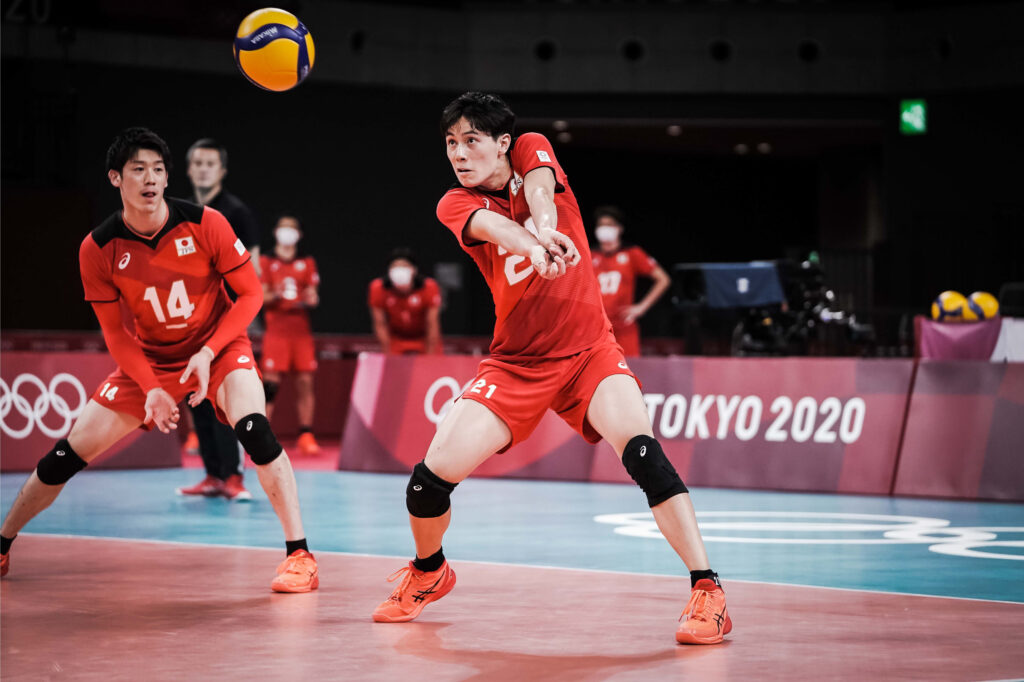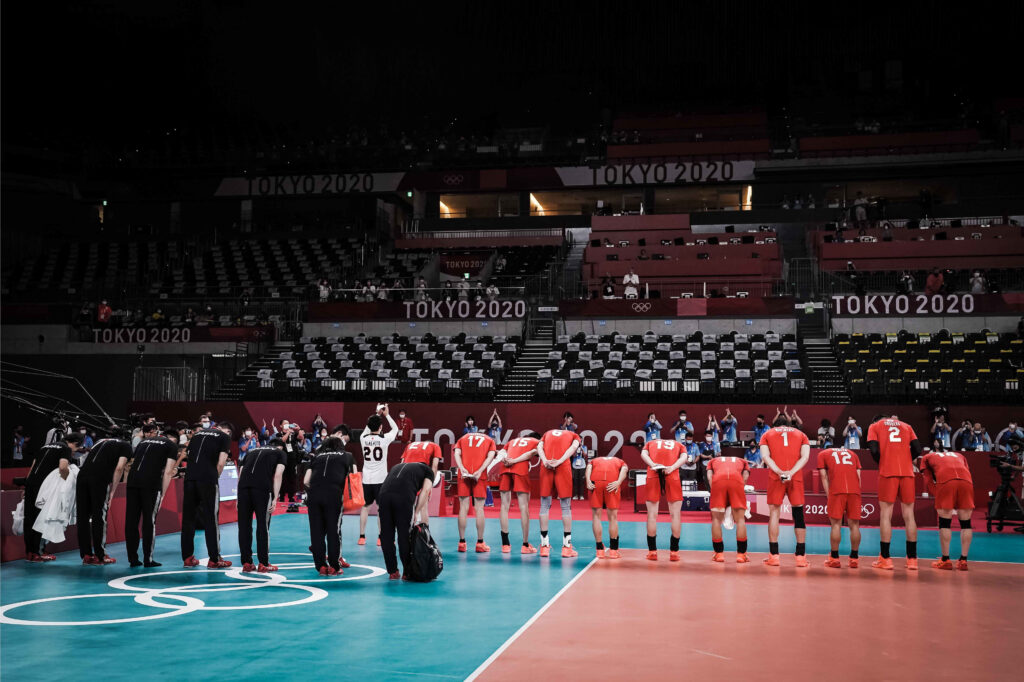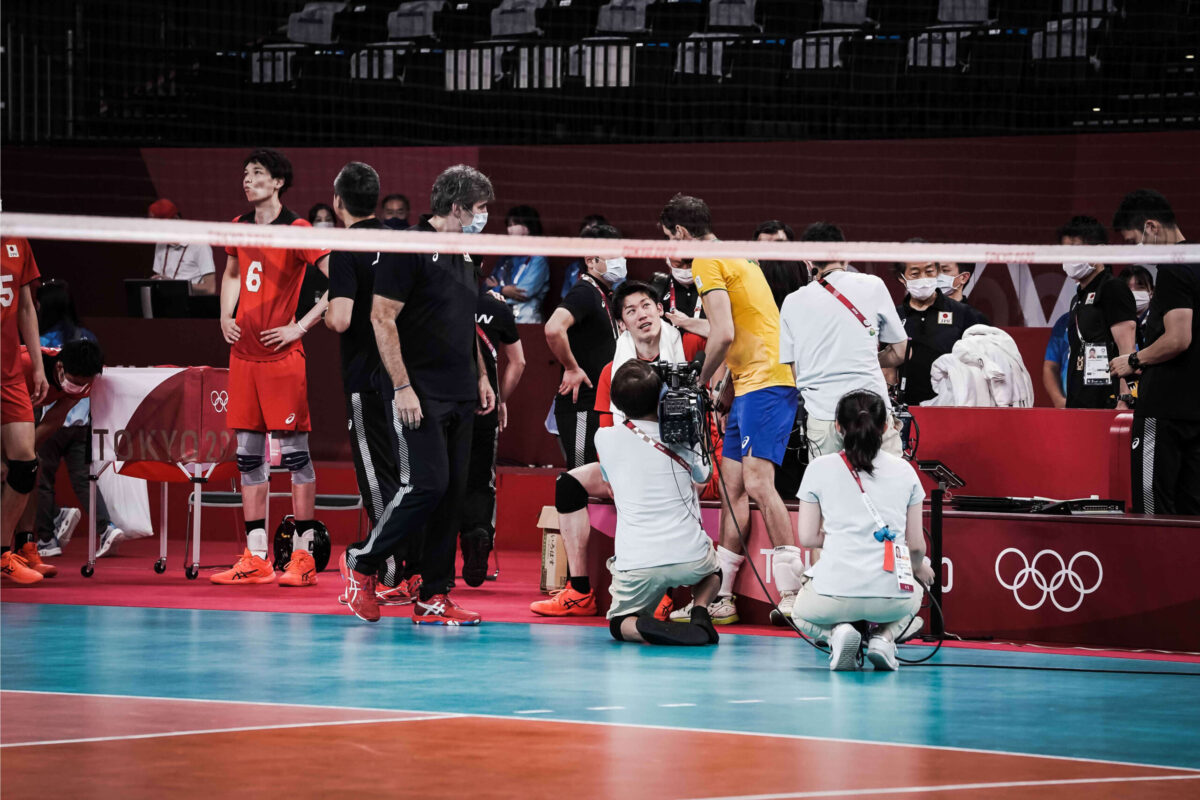I finally got to watch the full match, so I'd like to share my thoughts on it. Overall, as Ishikawa said in the post-match interview, it was a great match in which the Japanese team put everything they could on the court. Japan's intentions were clearly visible from the play, and there were many scenes where it actually worked well. However, the reigning champion Brazil went above and beyond Japan's best. I think that in that match, we were able to see some of Japan's current challenges.
Click here for an introduction to the Brazilian team and match previews
A serve strategy with a clear intention
First of all, one area where Japan did quite well was their serving tactics. Japan focused their serves on Real, an outside hitter who Brazil struggles to receive. I think that this was especially true for players who hit control serves. Although there were few service aces, Real had very few opportunities to return the A pass, which I think continued to stress the Brazilian team. However, Brazil used a variety of attacks, such as quicks, even from the B pass, and had a very high ability to make high sets, surpassing Japan's tactics. In order to compete with top teams, I feel that Japan's serves need to improve the quality of their serves, such as targeting the player and dropping the ball further forward to make him kneel down to receive it, or hitting powerful serves.
Ironclad serve reception
Next, Japan's serve reception was truly excellent. Although there were one or two balls that were returned directly to the opponent's court, Japan managed to limit Brazil's service aces to zero in the records. I don't remember a game in which Brazil had zero service aces. At least in the 16 games in this year's Nations League and the four games in the Olympics, there was not a single game in which Brazil did not have a service ace. The reason for this is, first of all, the extremely high ability of the three players in charge of serve reception, Ishikawa, Takahashi, and Yamamoto, but since there were no aces taken by serves being hit between the receivers as seen in the Nations League, I felt that the division of roles in this rotation, such as who takes which ball, was very well done. Also, for the opponent's powerful jump serves, instead of trying to return them with an A pass, they actively returned the ball high near the attack line. This prevented the mistake of returning the serve directly to the opponent's court, and avoided losing attacking opportunities. Just like the top teams overseas, Japan now has an attacking system that allows them to set up quick combinations even from near the attack line, so even if the ball is returned near the attack line, there is no problem as long as the setter is high enough to jump and set it. Japan's serve reception is undoubtedly at the world's best level.

Lack of firepower from middle blockers
Japan's middle players were also able to persistently mark the opponent's quicks and jump to block them. However, the opponents knew this and hit long spikes or played with the width of the course, so they were not able to put much pressure on the opponent's middle blockers and setters, which is something that will need to be addressed in the future. However, when it comes to the middle players, I think the problem was more in the spikes than in the blocks. In the first set, setter Sekita provided three tosses to middle player Onodera and Yamauchi provided one toss, but the Brazilian middle players made good touches and they were unable to score points with the quicks. This led to stricter marking of Japan's side players from the second set onwards, which caused a drop in the success rate of spikes for Nishida and Takahashi. From the second set onwards, the marking became lighter and they finally started to make spikes, but they were also able to deal with digs and it seemed like they were not putting much stress on the Brazilian blockers. Unless they can perform as impressively on the offensive side as Li did in the Italy match in every game, the opponent's middle players will not be wary of them. I believe that increasing the offensive power of Japan's middle blockers is an essential element for the team's further evolution.
Nishida's serve
Another point that was disappointing was Nishida's serve. Although he scored one service ace each in the early stages of the first and second sets, his overall mistakes, especially those hitting the net, were noticeable. It's a jump serve aimed at an ace, so some mistakes are unavoidable, but even so, he made a lot of mistakes that day, and mistakes at the net are the easiest for the opponent because he doesn't have to decide whether to hit it in or out. As the block is low, Japan needs to fight more with his serves, and Nishida's serve is particularly feared around the world, so expectations are high for him. There were many times when we hoped his serve would hit, but we didn't see it in the match against Brazil. Not just in this match against Brazil, but throughout this tournament, Nishida's serve was not at its best. This is even more so because Ishikawa's serves in the last two matches were amazing. In the match against Iran, he only hit two in five sets, and it was very disappointing because his spikes were in good form. Japan will still have to rely heavily on his serve to beat top-level teams. Nishida is a player who can change the flow of the match with his serve, like Brazil's Lucarelli in the second set. I would love to see him break down the opponent's receivers and hit a service ace in a pressure situation again.
Overall
I've written a lot about this, but although it was a disappointing loss, I think it was a game that can be taken positively. Among them, the match was also a match that highlighted the presence of the man named Ishikawa Yuki, with a service ace at the end of the third set, which was a very exciting fake set festival. However, although the team was doing well overall, I got the impression that there were still some areas where the individual abilities, both physical and mental, were lacking. In that respect, the concentration and performance of each member of the Brazilian team was amazing. I think that was really the difference. In other words, the Japanese team still has room to grow, can grow more as a team, and has the potential to become stronger. The direction is not wrong, so they just need to keep moving forward. I am really proud of the Japanese team that they have become. I'm looking forward to seeing them in three years.

P.S.
After the match, his former Modena teammate and Brazil captain Bruno spoke to Ishikawa. It made my heart swell with emotion that Bruno really is a kind person.

Photo: FIVB
